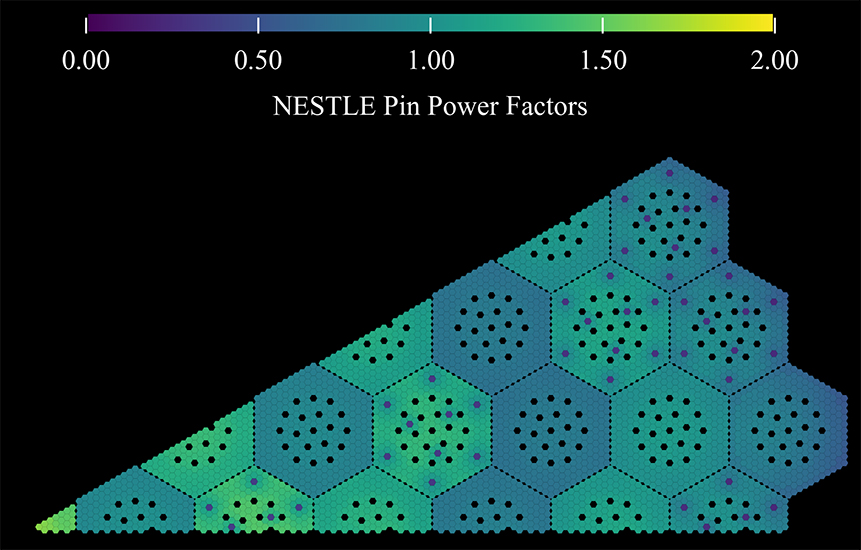Advanced modeling and simulation of nuclear reactors and associated systems provides valuable guidance for the design and optimization of current and next-generation reactors, including the ability to assess new fuel cycle and core management strategies, evaluate the performance of emerging fuel forms and advanced materials, and concurrently determine the impact of thermal hydraulic fluid options within coupled multi-physics frameworks.
Research Themes
Core Design and Neutronics
Some recent research projects have revolved around the integration of CASMO-, SCALE-, MC2-3, and Serpent-based lattice physics with NESTLE, PARCS, and DIF3D full-core three-dimensional nodal diffusion core neutronics for modeling PWRs, BWRs, SMRs, CANDUs, VVERs, HTGRs, SFRs, and salt-cooled FHRs. The CASL VERA tools are also used by some students in collaboration with ORNL. Also, some of these studies have evolved into multi-disciplinary collaborations for the assessment of accident tolerant fuels in LWRs and SMRs. This focus area encompasses reactor physics, computer methods development, shielding, and nuclear criticality safety.
Fuel Cycles
This focus area pertains to sustainable nuclear fuel cycles, which includes the intersection of advanced nuclear fuel cycles, radioactive waste management, and novel safeguards techniques for advanced fuel cycle facilities. In general, research in this area focuses upon computational nuclear engineering applications, including modeling fuel cycle source terms (including spent nuclear fuel) to better understand characteristics of advanced nuclear fuel cycles and improving safeguards therein. In addition, other related areas of interest include policy issues pertaining to the nuclear fuel cycle, including energy policy and radioactive waste management (such as used fuel disposition strategy).
Thermal Hydraulics, Reactor Safety, and Nuclear Fuel Safety
This focus area relates to computational and experimental studies of nuclear reactor safety and simulation of reactor and system transients. This work also includes the nuclear fuel safety of advanced fuel and cladding materials. Specific examples related to reactor thermal hydraulics include liquid metal flow and heat transfer, cavitation and fluid transients, accelerator target design, and microchannel flow.
Potential research opportunities for graduate students and postdocs also include development of separate and integral effects fuel safety tests, including the design of TREAT tests for transient in-pile critical heat flux testing in collaboration with Idaho National Laboratory. Additional ongoing efforts involve collaboration with the University of New Mexico on the modeling of steady state and transient critical heat flux tests. One ongoing collaboration with ORNL includes design and interpretation of fuel safety separate effects tests that mimic the low temperature (pellet-cladding mechanical interaction) phase of reactivity initiated accidents for advanced cladding materials.
Nuclear Materials Modeling and Simulation
Computational modeling and measurements of radiation effects in materials, molecular dynamics simulation, and nano-materials.
Facilities
Nuclear Materials Modeling and Simulation
The department maintains our continuously growing Nuclear Engineering Linux Cluster which consists of over 60 computing nodes, most of which are based on 8-core Intel i7 processors and 32-core Xeons, presently totaling over 2500 cores and 7 TB of RAM. The computing nodes are rack-mounted boxes, connected to the head node via Gigabit Ethernet. Software available on the cluster for approved users includes MCNP, SCALE, Serpent, VERA, GEANT4, ROOT, MATLAB/SIMULINK, etc.
